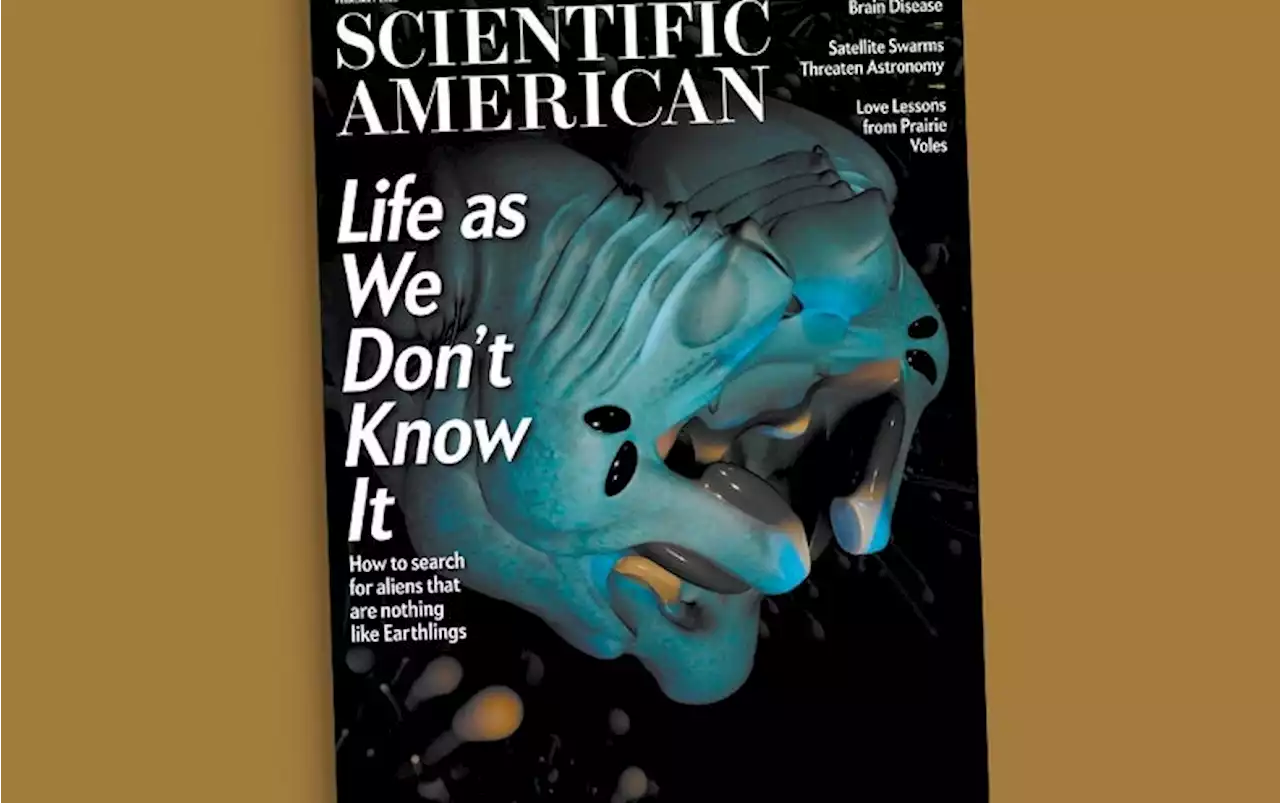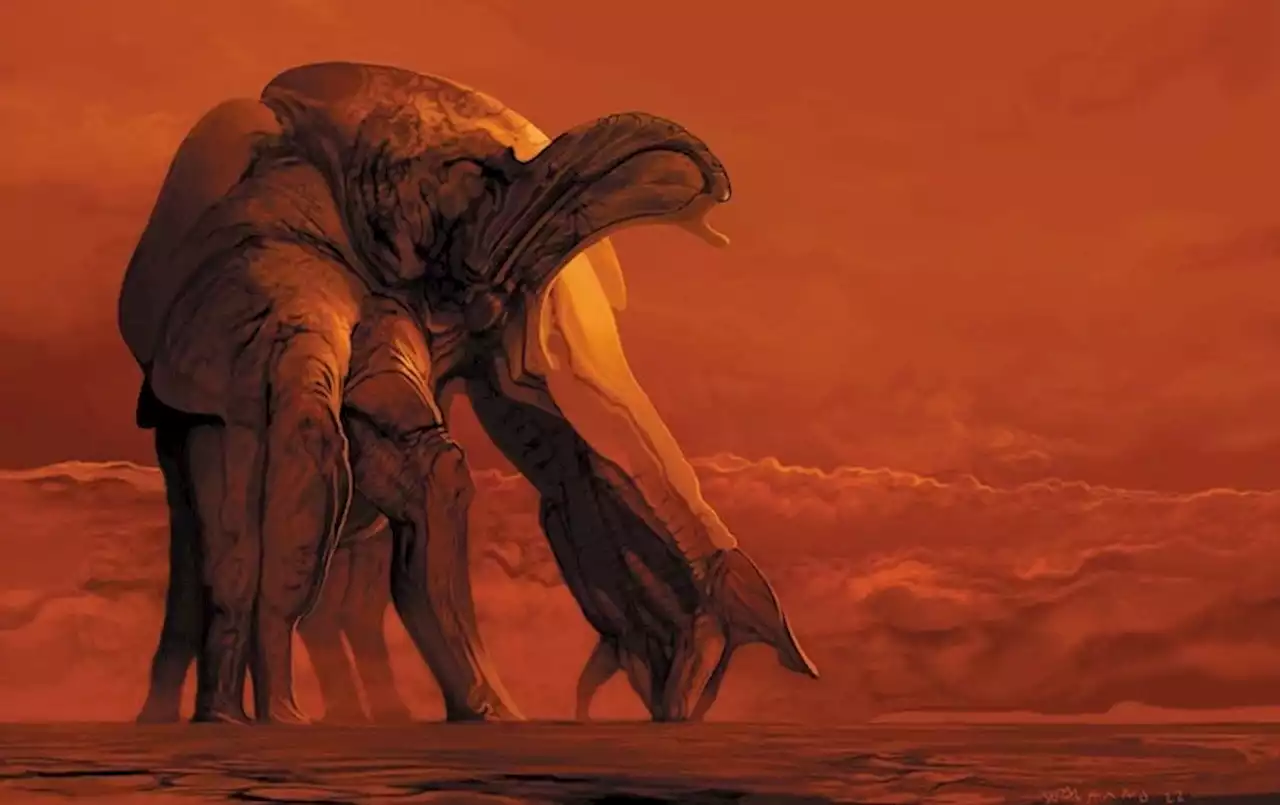Life on other planets might not look like any beings we're used to on Earth. It may even be unrecognizable at first to scientists searching for it.
Sarah Stewart Johnson was a college sophomore when she first stood atop Hawaii’s Mauna Kea volcano. Its dried lava surface was so different from the eroded, tree-draped mountains of her home state of Kentucky. Johnson wandered away from the other young researchers she was with and toward a distant ridge of the 13,800-foot summit. Looking down, she turned over a rock with the toe of her boot. To her surprise, a tiny fern lived underneath it, having sprouted from ash and cinder cones.
If Johnson’s musings are correct, the current focus of the hunt for aliens—searching for life as we know it—might not work for finding biology in the beyond. “There’s this old maxim that if you lose your keys at night, the first place you look is under the lamppost,” says Johnson, who is now an associate professor at Georgetown University. If you want to find life, look first at the only way you know life can exist: in places kind of like Earth, with chemistry kind of like Earthlings’.
Life, Astro Life or Lyfe Part of the difficulty in searching for life of any sort is that scientists don’t agree on how life started in the first place—or what life even is. One good attempt at a definition came in 2011 from geneticist Edward Trifonov, who collated more than 100 interpretations of the word “life” and distilled them into one overarching idea: it’s “self-reproduction with variations.
Alien life could have genetic code with, say, different bases. NASA-supported 2019 research, from the Foundation for Applied Molecular Evolution, successfully created synthetic DNA that used the four old-school bases and four new ones: P, Z, B and S. Scientists have also altered the strand part of genetic code, creating XNA—where X means anything goes—that uses a molecule such as cyclohexene or glycol , rather than deoxyribose.
Trying to figure out how biology emerged on the planet we know best is the province of “origin of life” studies. There are two main hypotheses for how clumps of chemistry became lumps of biology—a process called abiogenesis. One holds that RNA arose able to make more of itself, because that’s what it does, and that it could also catalyze other chemical reactions. Over time that replication led to beings whose makeup relied on that genetic code.
So astrobiologists often end up looking for aliens that resemble Earth life. Astronomers like to consider oxygen in an exoplanet atmosphere as a potential indicator of life—because we breathe it—although a planet can fill up with that gas in less lively ways. On Mars, researchers have been psyched by puffs of methane, organic molecules, and the release of gas after soil was fed a solution of what we on Earth call nutrients, perhaps indicating metabolism.
After the meeting, Johnson and her co-conspirators put in a last-minute proposal to develop an instrument for NASA. It would find and measure molecules whose shapes fit physically together like lock and key because that rarely happens in random collections of chemical compounds but pops up all over living cells. The instrument idea, though, didn’t make the cut. “That’s when we realized, ‘Okay, we need to roll this back and do a lot more fundamental work,’” Graham says.
The two kinds of materials can look superficially alike because they’re both highly ordered. But the team aims to show that geochemical models, which simulate how water saturated with chemicals will precipitate them out, will predict the kind of abiotic crystals found there. Kidd Creek, for instance, has its own sort: Kiddcreekite, a combination of the copper, tin, tungsten and sulfur that crystallizes from the water.
The disequilibrium of living should show up as a chemical difference between an organism and its surroundings—regardless of what the surroundings, or the life, are made of. “I can go scan something, make a map and say, ‘Show me the distribution of potassium,’” Girguis says. If blobs of concentrated K appear, dotting the cartography only in certain spots, you may have biology on your hands.
The abundance of cells of different sizes tends to follow a relationship known as a power law: Lots of small things with a steep drop-off as cells get larger. If you took an extraterrestrial sample, then, and saw those mathematical relationships play out—small things that looked like their surroundings, with progressively larger things looking less like their environments, with lots of the former and few of the latter—that might indicate a biological system.
Cronin had bragged that by doing mass spectrometry, he could measure the complexity of a molecule without even knowing what the molecule was. If the technique indicated that a molecule’s complexity crossed a given threshold, it probably came from a biological process. Still, even among old-school astrobiology researchers looking for Earth-like signatures on exoplanets, the LAB approach has support. Victoria Meadows of the University of Washington has been thinking about such far-off signals for two decades. She’s seen the field change over that time—complexify, if you will. Scientists have gone from thinking “if you see oxygen on a planet, slam dunk,” to thinking “there are no slam dunks.
United States Latest News, United States Headlines
Similar News:You can also read news stories similar to this one that we have collected from other news sources.
 10 UFO Sightings and Rumors About Extraterrestrial LifeDespite the lack of hard evidence, the U.S. government has logged more than 350 UFO sightings since March 2021, with military branches logging even a few of their own.
10 UFO Sightings and Rumors About Extraterrestrial LifeDespite the lack of hard evidence, the U.S. government has logged more than 350 UFO sightings since March 2021, with military branches logging even a few of their own.
Read more »
 Adorable Voles, Life as We Don’t Know It and Better CementLove in the brain, how dreams predict disease and better words for climate change in this month’s issue of Scientific American
Adorable Voles, Life as We Don’t Know It and Better CementLove in the brain, how dreams predict disease and better words for climate change in this month’s issue of Scientific American
Read more »
 Irving police search for additional victims of man accused of sexual abuse dating back to 1986Irving police are searching for any additional victims of a 69-year-old man who is accused of sexually abusing at least four victims since 1986.
Irving police search for additional victims of man accused of sexual abuse dating back to 1986Irving police are searching for any additional victims of a 69-year-old man who is accused of sexually abusing at least four victims since 1986.
Read more »
 Hulu's new comedy series 'Extraordinary' brings humor and heartHulu's new comedy series 'Extraordinary' shows one girl's search for her superpower.
Hulu's new comedy series 'Extraordinary' brings humor and heartHulu's new comedy series 'Extraordinary' shows one girl's search for her superpower.
Read more »
 Search underway for suspect who stole nearly $100K worth of jewelry from Rittenhouse storeThe suspect walked into the Rittenhouse Hotel and wandered around the first floor, where he came upon the door to the Egan Rittenhouse Jewelry Store unlocked, authorities say.
Search underway for suspect who stole nearly $100K worth of jewelry from Rittenhouse storeThe suspect walked into the Rittenhouse Hotel and wandered around the first floor, where he came upon the door to the Egan Rittenhouse Jewelry Store unlocked, authorities say.
Read more »
 I Spent a Week Using Only TikTok for SearchMove over, Google. if you’re seeking less specific, more entertaining results—a search process more akin to social discovery—then TikTok is making a strong play.
I Spent a Week Using Only TikTok for SearchMove over, Google. if you’re seeking less specific, more entertaining results—a search process more akin to social discovery—then TikTok is making a strong play.
Read more »
